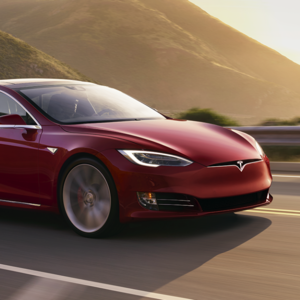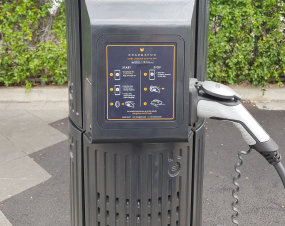Looking to drop some krona on a Kona? The Norwegian used car-buyers guide is here to help. We’ve pitted some of Norways top-selling used electric and combustion vehicles against each other to find the best deals Scandinavia has to offer.

Everyone with a finger on the automotive pulse knows Norway is leading the pack for EV adoption. Since exempting EVs from their hefty 25% vehicle sales tax in 1990, they’ve seen an exponential rise in sales that saw them take 58% of the new car market in March.
But not all car sales come straight off the lot. The latest Roy Morgan data shows Australians are actually less enthusiastic about EVs than they were a year ago — but only for new models. The number of Aussies planning to buy a used EV has shot up 74% since 2018.
So what does Norway have to teach us about the resale value of EVs, and how do they stack up to their combustion counterparts? We’re diving into Norway’s largest used car sales plåtform finn.no to find øut.

And you can put down your pitchforks. Obviously these prices won’t translate to Australia; we’re interested in the long term performance of EVs in a mature market with developed infrastructure and strong subsidies. We’ll be trying to keep the comparisons fair and at approximate market value, and since Norway operates on a confusing hybrid of Norwegian krone, Swedish krona, and euros, we’ll be sticking to approximate Aussie dollar values for clarity.
They might not be the sexiest stats, but these are the types of comparisons Aussies will be making in the next decade that will determine how many EVs make it onto our roads.
Tesla Model S vs. BMW 5 Series
First off the rank is a 2013 Model S with 79,100 km on the clock. It’s a classy shade of navy blue with an 85 kWh battery pack, a 2 year used car warranty, and an asking price of ~$57,000 AUD.
And up against it: a 2013 BMW 5 Series 535i. It’s got 340 active hybrid horses under the hood and 78,000 km on the odometer. The 5 Series today retails at around the same price as a Model S, with similar luxury and comparable performance (except on acceleration, where the Tesla swamps it every time).
This particular example is listed for ~$73,000 AUD. That’s not counting the ~$600 reregistration fee its eventual buyer will have to fork out for the privilege of driving combustion.
This one certainly looks like a landslide win for the Tesla. About $16k cheaper, same miles, same year, with none of the fees and a fraction of the running and maintenance costs. Unless you’re a BMW diehard it looks like a knockout.
At least as long as the battery holds up. Tesla batteries are pretty well regarded for their longevity, but a full replacement down the track could add a hefty premium that definitely swings the balance toward combustion. Thankfully the data suggests this won’t be a problem; Tesla battery packs from around this era have been shown to only lose about 5% of their capacity on average after 50,000 miles (~80,000 km).
Nissan Leaf vs. VW Golf
But what about Norway’s best-selling car, the Nissan Leaf? They’re certainly more affordable than the Tesla or the BMW. We’ve found a 2014 Leaf with almost 90,000 km on finn.no for ~$13,000 AUD. It’s an attractive prospect, for sure, thanks to its classy silver finish.
But if the silver isn’t for you, perhaps you’d rather the glossy black on this 2014 VW Golf TDI? It’s got all 2014’s hottest extras including front assist and DAB+, and you can put the 104,000th km on it today for just 135,000 Swedish krona or ~$21,000 AUD.
Once again this looks like a win for the EV, but it’s not a shoe-in. Early Nissan Leaf batteries are notoriously low on range, so long trips are a tough prospect especially after several years on the road. This might not be a huge concern for Norwegians thanks to their vast public charging network, but it’s definitely something to consider. Take it on a case-by-case basis I suppose.
Hyundai Kona EV vs. Toyota RAV4
If there’s a contest used EVs can lose, surely it’s the one where they cost more than a brand new model, right? Perhaps not.
The Hyundai Kona EV made its way to Norwegian buyers in 2018 at a NOK 335 900 (~$55,000 AUD) asking price for the leather upholstered, 64 kWh model. Today, that same car with 9,000 km’s logged is being sold for ~$58,000 AUD on finn.no.
That’s almost 400,000 krona for a Kona, and it’s no fluke. Since the Kona EV sold out they’ve been seriously hot property in Norway, and every single one on the site today is listed for around that price. Buying one is practically an investment.
Compare that to this 2018 RAV4 with 35,000 km under its belt. It’s selling for ~$66,000 AUD with a ~$1000 AUD reregistration fee, and it only has “partial” leather seats. Even the most anti-EV combustion nut would have a tough time justifying petrol in Norway — and these are seriously unfavourable circumstances for the Kona.
So what does this all mean for Aussies looking to buy a used EV? Not much, at least not for now. Strong resale value is all well and good for Norway, but there’ll need to be a massive uptake of new vehicles entering the country before we can count on a similarly robust market. But it’s fun to talk about.
Whether you’re buying used or fresh off the lot, your EV will need a home charging station. Contact the JET Charge technicians at info@jetcharge.com and stay tuned to our blog and Facebook page for more EV news and updates.









